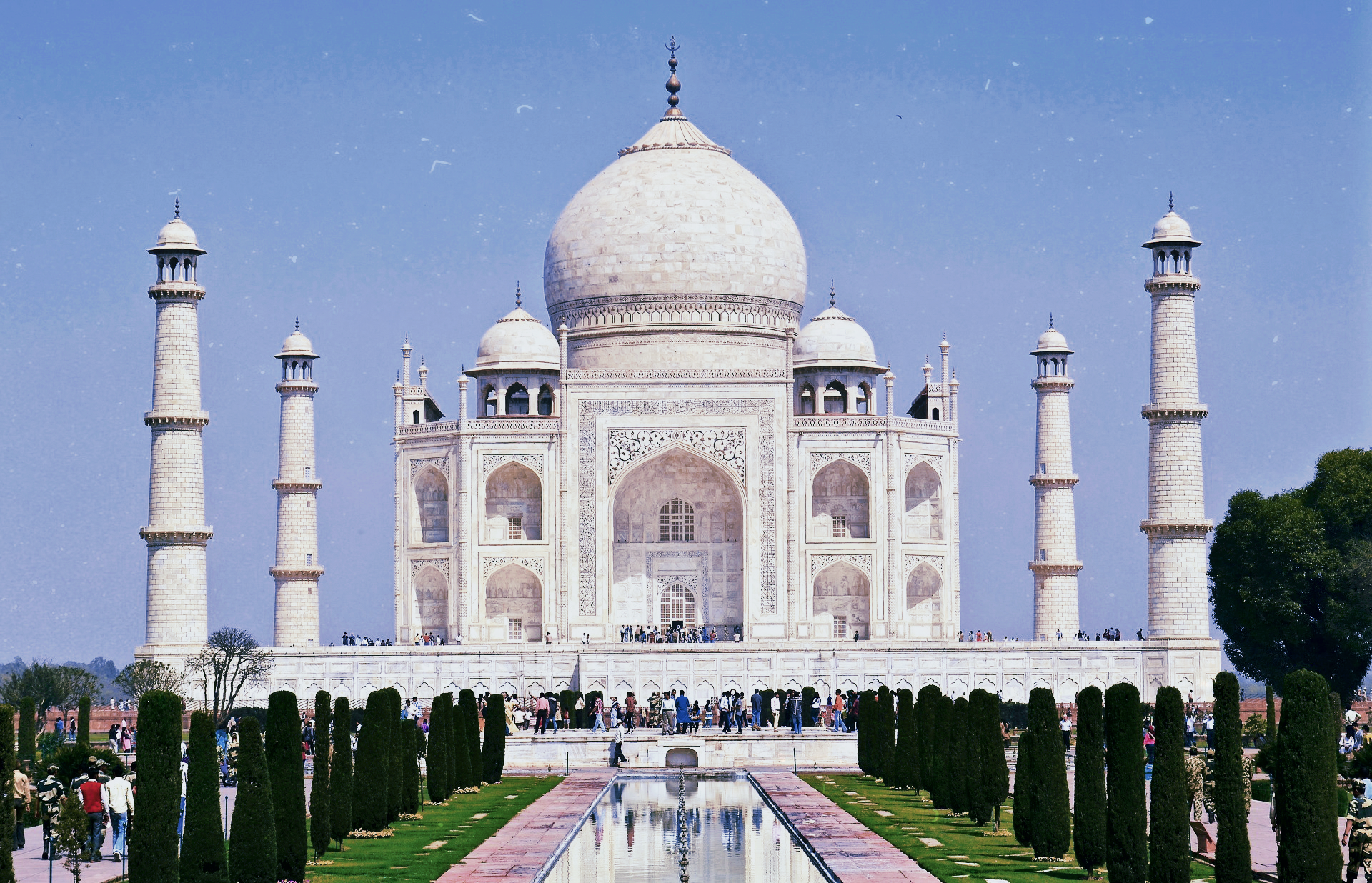
The Taj Mahal, a pristine masterpiece of white marble, stands as an enduring symbol of love, architectural brilliance, and timeless beauty. This iconic monument, located in Agra, India, has captured the hearts of millions around the world. Let’s embark on a journey through the architecture, design, concept, and history that make the Taj Mahal a wonder of the world.
Architectural Marvel:
The Taj Mahal’s architectural design is nothing short of extraordinary. Designed by Ustad Ahmad Lahori, it combines elements of various architectural styles, including Persian, Islamic, and Indian. The primary building material is pure white marble, which lends the structure its dazzling appearance. The iconic central dome, flanked by four smaller domes, creates a breathtaking silhouette that appears to float above the structure. The intricate lattice work, or jali, allows natural light to filter through and adds to the ethereal quality of the monument.

Design and Concept:
The Taj Mahal was commissioned by Emperor Shah Jahan in memory of his beloved wife, Mumtaz Mahal, who passed away during childbirth. The design and concept of the Taj Mahal were driven by Shah Jahan’s deep love and grief. The monument is a mausoleum that houses the tombs of Mumtaz Mahal and Shah Jahan himself, who was later buried beside his beloved wife.
The Taj Mahal’s design reflects the idea of paradise on Earth, a concept rooted in Islamic architecture. The expansive gardens, divided into four quadrants by water channels, represent the four rivers of paradise, while the central pool mirrors the heavens. The Charbagh layout, a Persian-style garden, is a testament to precision and symmetry, a recurring theme in Islamic art and architecture.
Historical Significance:
The Taj Mahal’s history is intertwined with the Mughal Empire’s zenith during the 17th century. Construction of the monument began in 1632 and took over two decades to complete. The labor of thousands of artisans, architects, and laborers culminated in this magnificent structure.
The Taj Mahal is not only an architectural wonder but also a symbol of enduring love and an enduring legacy. It is a UNESCO World Heritage Site and has consistently ranked among the most recognized landmarks globally.

Conclusion:
The Taj Mahal stands as an architectural and design marvel that transcends time and culture. It is a testament to human creativity, love, and the pursuit of perfection. Visiting the Taj Mahal is not just a journey through history, but an experience that allows one to marvel at the genius of its architects and the enduring beauty of its design, all while paying homage to the eternal love story that it represents.
